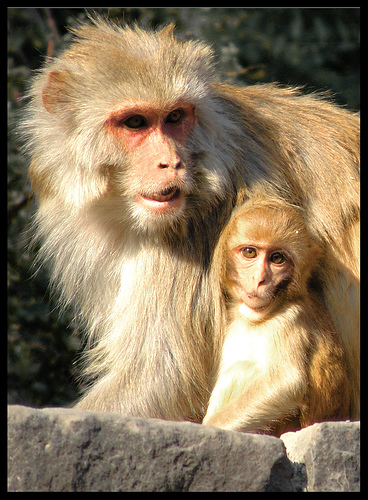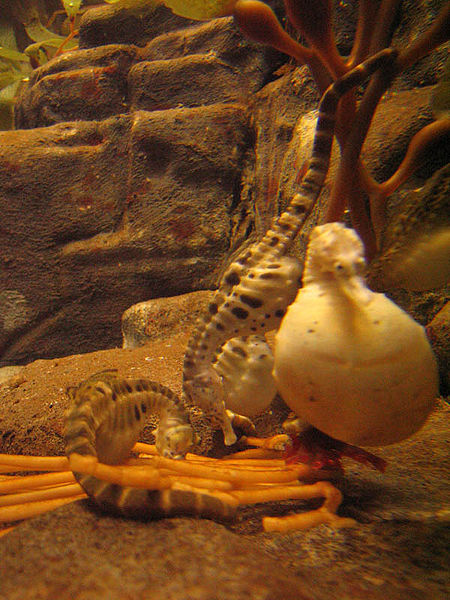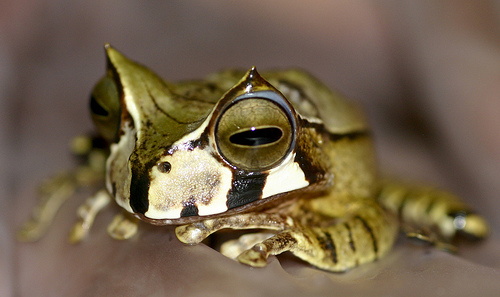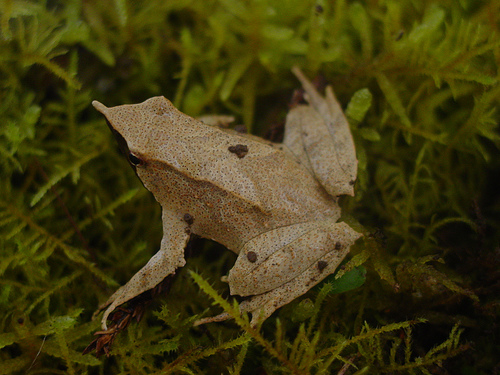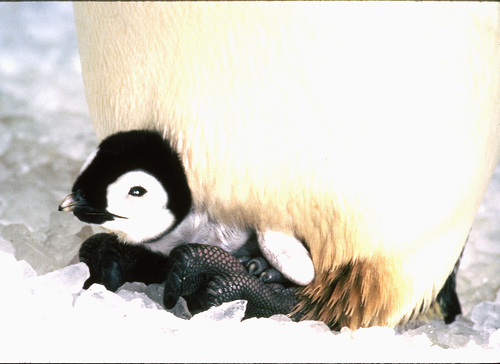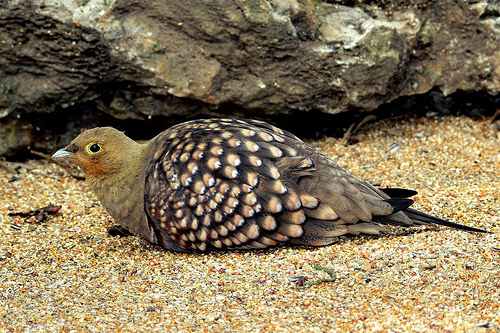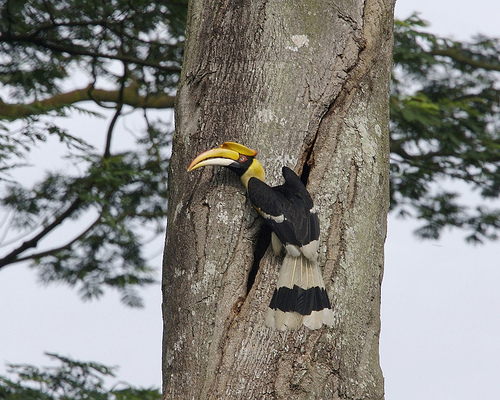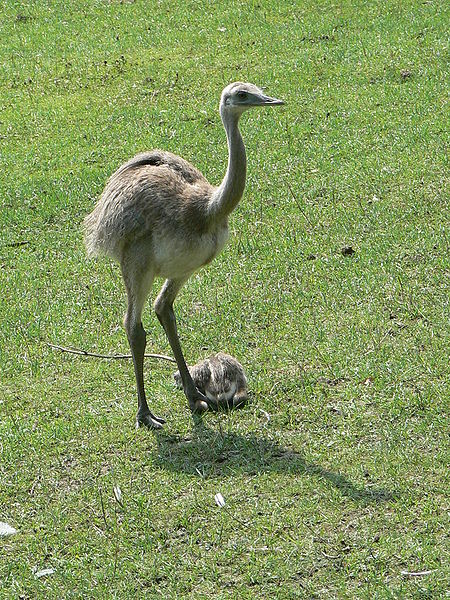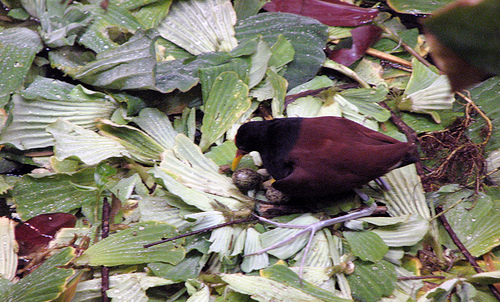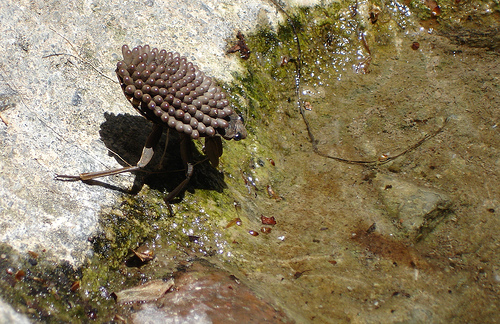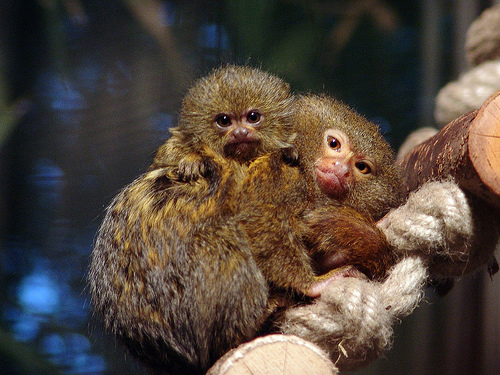共产档
MISH - MASHIn nature, most animals have little or no contact with their biological fathers, but humans do and we certainly aren’t alone. In celebration of all the great dads of our readers and the great dad readers, here’s a collection of some of the best animal fathers around in no particular order.
Image via Sukanto Debnath [Flickr]
1) Seahorses
Perhaps the most famous of all animal fathers are seahorses, which are known for being one of the only male animals in the world to get pregnant. The female deposits her eggs into his brood, then he fertilizes the eggs and carries them to term. As you can see in the image, they can get quite large during the pregnancy period. The number of babies may vary greatly by species, as seahorses can deliver as few as 5 babies or as many as 1,500. On average though, the numbers are around 100-200.
Source Image via Jaro Nemcok
2) Hardhead Catfishes
The hardheaded catfish doesn’t have such a thick skull when it comes to fatherhood. While he doesn’t get pregnant like a seahorse, he does put up to 48 of his fertilized eggs in his mouth and carries them with him for 60 days. If that wasn’t uncomfortable enough, he doesn’t eat for this entire period, making him one dedicated daddy.
Source Image via Eustatic [Flickr]
3) Marsupial Frogs
As the name suggests, the marsupial frog also carries his babies around in his brood pouch. While there are a few different species of marsupial frogs, perhaps the most impressive fathers are those that guard the eggs laid on the ground. When the eggs hatch, the ground will not provide enough moisture for the tadpoles, so he puts them in his brood pouch until they hop out as baby frogs.
Source Image via Brian.gratwicke [Flickr]
4) Darwin Frogs
Similarly, the Darwin frog also guards its eggs until they hatch, but he takes them into his vocal sac (up to 30 at a time), where they will stay until they grow into young frogs and hop out of his mouth.
Source Image via huenchecal [Flickr]
5) Mimic Poison Frog
The mimic poison frog has a notable reputation for not only being a great father, but also being a great husband. As a matter of fact, it is the only amphibian to be certifiably monogamous. The female frog lays her eggs on leaves and those that hatch are then moved by the father into a tiny pool of water inside a bromeliad. Because there are not enough nutrients for the tadpoles to survive in these conditions, the male not only guards them, but watches for signs that the baby needs food. When he croaks, the mother comes by and lays an unfertilized egg in the pool of water as a source of nourishment for the baby.
Source Image via phrakt [Flickr]
6) Emperor Penguins
Perhaps the next best known fathers in the animal kingdom, emperor penguins not only watch the fertilized eggs, they go for months at a time in the freezing arctic without a meal. The fathers keep the eggs on their feet and covered with their bellies because contact with the sub-freezing ground can result in immediate death of the embryo inside. He stays like this for two months and by this time, he has already gone over 100 days without a meal. The female penguins generally return shortly after the eggs hatch, but until they arrive, the daddy manages to feed the youngsters with a substance produced in his esophagus. Only after the females return and the couple exchanges shifts does the male get to head to sea for a well-deserved meal.
Source Image via ASOC Pictures [Flickr]
7) Namaqua Sandgrouse
When it comes to care after the chick is born, the Namaqua sandgrouse is one heck of a dad. During the incubation period, he sits on the nest at night and then the mother incubates the eggs during the day. The father really shines after the chicks hatch though and the mother leaves the family to fend for themselves. The birds live in arid desert areas and while the nests are always located around watering holes, the young chicks cannot make it to water, so the dad has to bring it to them. He dips his belly in water every morning and his feathers absorb the water like a sponge, each feather can hold up to eight times its weight in water. He then returns to the nest where the chicks can drink the water straight from his feathers.
Source Image via Arno & Louise [Flickr]
 Greater Hornbills
Greater Hornbills
Ever wonder why a hornbill has such a massive beak? It’s partly so they can break out of their nesting area when they grow up. Greater hornbills build their nests inside hollowed out parts of trees, which are then sealed off with mud and feces so nothing can get in or out without quite a struggle. The mother stays in the inside of this nest and a small slit is left in the plug so the male can pass food to her. For the entire incubation period, he will make up to five trips a day to feed his mate and the chicks once they hatch. When the chicks become large enough to crowd the nest, the mother will break her way out of the nest with her casque and then reseal the barrier, leaving the chicks inside. The mother and father then continue to take turns feeding the chicks for another four or five months until their beaks are developed enough that they can break the seal and fly out.
Source Image via Lip Kee [Flickr]
9) Rheas
Rhea may not be the most loyal mates, with each male courting anywhere between 2 and 12 females, but they are certainly great dads. Each male can incubate 10 and 60 eggs for around 40 days (an average nest contains around 26 eggs from 7 females). When the chicks are born, he is very protective, charging anyone, including female rheas, who approach the babies. He raises the chicks completely on his own and teaches them how to fend for themselves.
Source Image via LadyofHats [Wikimedia]
10) Jacanas
Like the rheas, jacanas are very active fathers who not only incubate their nests but teach their babies about the basics of life. Known as lily trotters or Jesus birds for their ability to walk on water using plants like the lily pads, these little birds lay their nests on submerged plants and the male protects and incubates the eggs while the female finds more mates. If the eggs start to sink or otherwise become endangered, he will carry them to a new nesting site under his wing. Once they are born, he helps feed and care for the chicks until they can survive on their own. The female will only return if the something happens to the eggs and the male is therefore open to breed again.
Source Image via emilybean [Flickr]
11) Giant Water Bugs
Insects aren’t generally considered to be the most active parents in the world, but the male giant water bug is certainly an exception. He totes the entire brood of eggs –often up to 150 at a time– on his back until they hatch. The female simply lays the eggs and then glues them to daddy before she takes off, leaving him to rear the youngsters. During the three weeks he carries the eggs, he protects them and takes time to dry them out of the water so they don’t get moldy.
Source Image via NoiseCollusion [Flickr]
12) Marmosets
Primates can be good dads too (as evidenced by our celebration of Father’s Day in general), and humans aren’t the only good fathers in our animal order. Enter marmosets. Not only are these little tiny monkeys simply adorable, they are also great parents.
Male marmosets start caring for their young from day one when they groom and lick newborns as the mother recuperates from her ordeal (the babies are generally born as twins and usually make up around 25 percent of her body weight, the equivalent of a human woman giving birth to a baby between 30 and 40 pounds). After thate feeds, carries and grooms the infants. Meanwhile, the mother will often get pregnant again within the next two weeks, leaving daddy to take care of the babies.
Source Image via Joachim S. Muller [Flickr]




